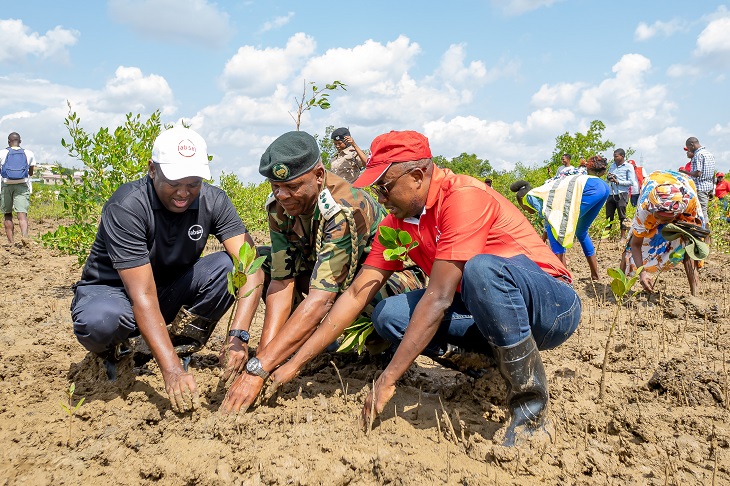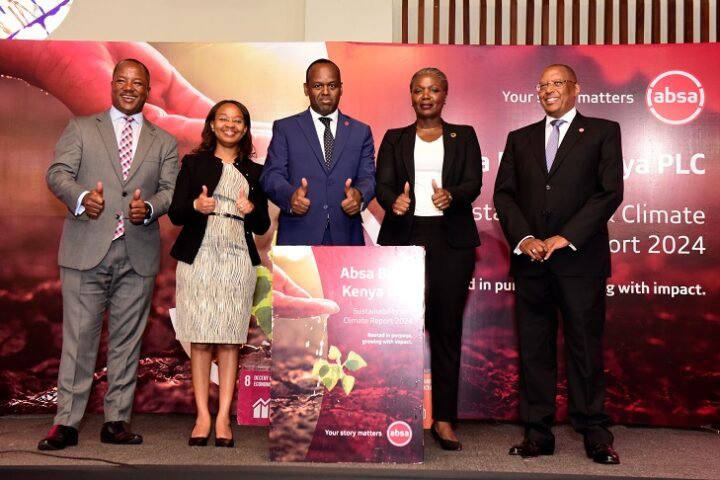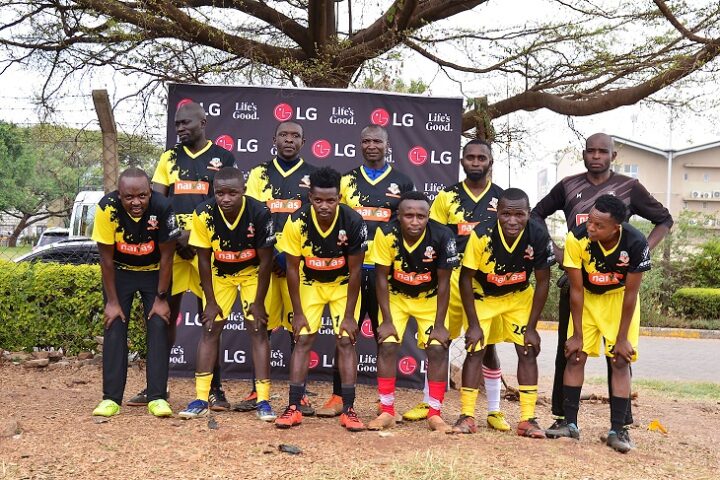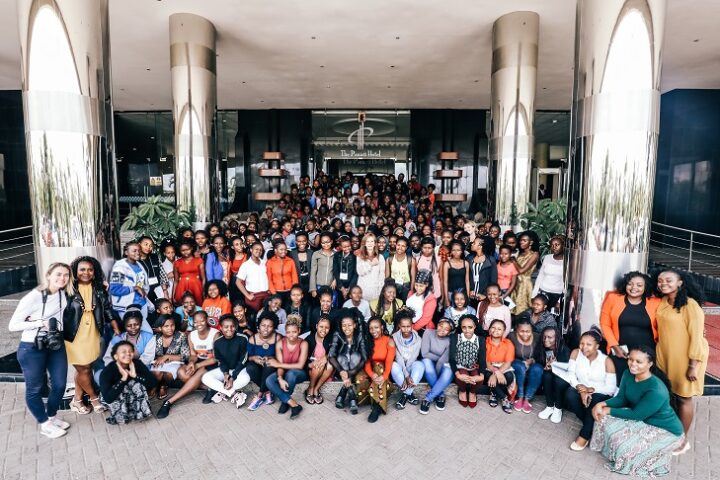Absa Bank Kenya has today kicked off a 150,000-mangrove tree reforestation initiative at Jomvu Kuu and Majoreni Forests in Mombasa and Kwale Counties.
The initiative, undertaken in partnership with the Kenya Forestry Service, Bidii Creek Conservancy, and Environmental Interaction Organization, is aimed at preserving and safeguarding fragile ecosystems along the coastline.
Speaking during the commissioning of the initiative at Tudor Creek in Mombasa County, Absa Bank’s Managing Director Mr. Abdi Mohamed, said the initiative aligns with the bank’s sustainability agenda and complements the ongoing government’s 15 billion tree planting agenda.
“As an active force for good, we care about the communities around us and the environment in which we operate. We recognize the critical role that mangroves play in maintaining biodiversity, mitigating climate change, and protecting coastal communities from natural disasters. We, therefore, believe our initiative will not only enhance the natural beauty of our coastline but also provide numerous environmental benefits such as erosion control, water quality improvement, and the promotion of biodiversity,” said Mr. Mohamed.
Jomvu Member of Parliament, Hon. Badi Twalib said: “Mangrove forests remain an important biodiversity hot spot that must be protected and conserved at all costs. Mangrove ecosystems also provide livelihood opportunities such as fishing and tourism, contributing to the economic well-being of the Tudor and Jomvu communities. We look forward to collaborating more with Absa towards empowering local communities.”
Mombasa County Forest Conservator Benjamin Muindi said: “Let’s plant all tree species to conserve our environment. Tree planting is no longer a KFS affair, we need partners such as Absa towards achieving the 30 percent forest cover by planting 15 billion trees by 2032.”
On his part, Bidii Creek Conservancy Chairman Ali Muhamed lauded the bank, saying: “We are proud to collaborate with Absa on this initiative. Their commitment to environmental sustainability aligns perfectly with our mission, and together, we can make a significant impact in protecting and restoring mangrove ecosystems. This partnership will not only benefit the environment but also create a stronger and more resilient community.”
Christened the ‘lungs of our coastlines’, mangrove trees can absorb up to 900 tonnes of CO2 from the atmosphere every year, thereby playing an active role in combating the climate crisis. Mangroves also act as formidable barriers against natural disasters, specifically storms and tsunamis as their intricate root systems dissipate wave energy, reducing the impact on vulnerable coastal communities and minimizing the destruction caused by these catastrophic events.
It is against this backdrop that the bank’s reforestation efforts in the Coastal region also include partnering with local community-based organizations such as the Gazi Women Group in Kwale County aimed at saving the mangrove forests from extinction.
Earlier this year, the bank signed a Memorandum of Understanding (MOU) with Safaricom and the Kenya Forest Service to adopt more than five degraded public forests across the country in a bid to reforest them. These forests included Kaptagat Forest, South Kinangop Forest, Njukiini Forest, and Kwa Jomvu Forest, among others.
“This year, we are targeting to plant over 1 million trees countrywide as part of our wider commitment to plant 10 million trees by 2025 and become a net zero organization by 2040. We believe our efforts will also scale the government’s efforts towards achieving 30 percent forest cover by 2032.” Mr. Mohamed added.
Over the past two years, the bank has been planting trees in the Southern part of Aberdare Forest and the Mau Complex in partnership with the Kenya Forest Service, local Community Forest Associations, and implementing partners such as the Worldwide Fund for Nature (WWF). The bank is also on course to rehabilitate a section of the degraded 100-hectare Sorget Forest in Kericho County.













